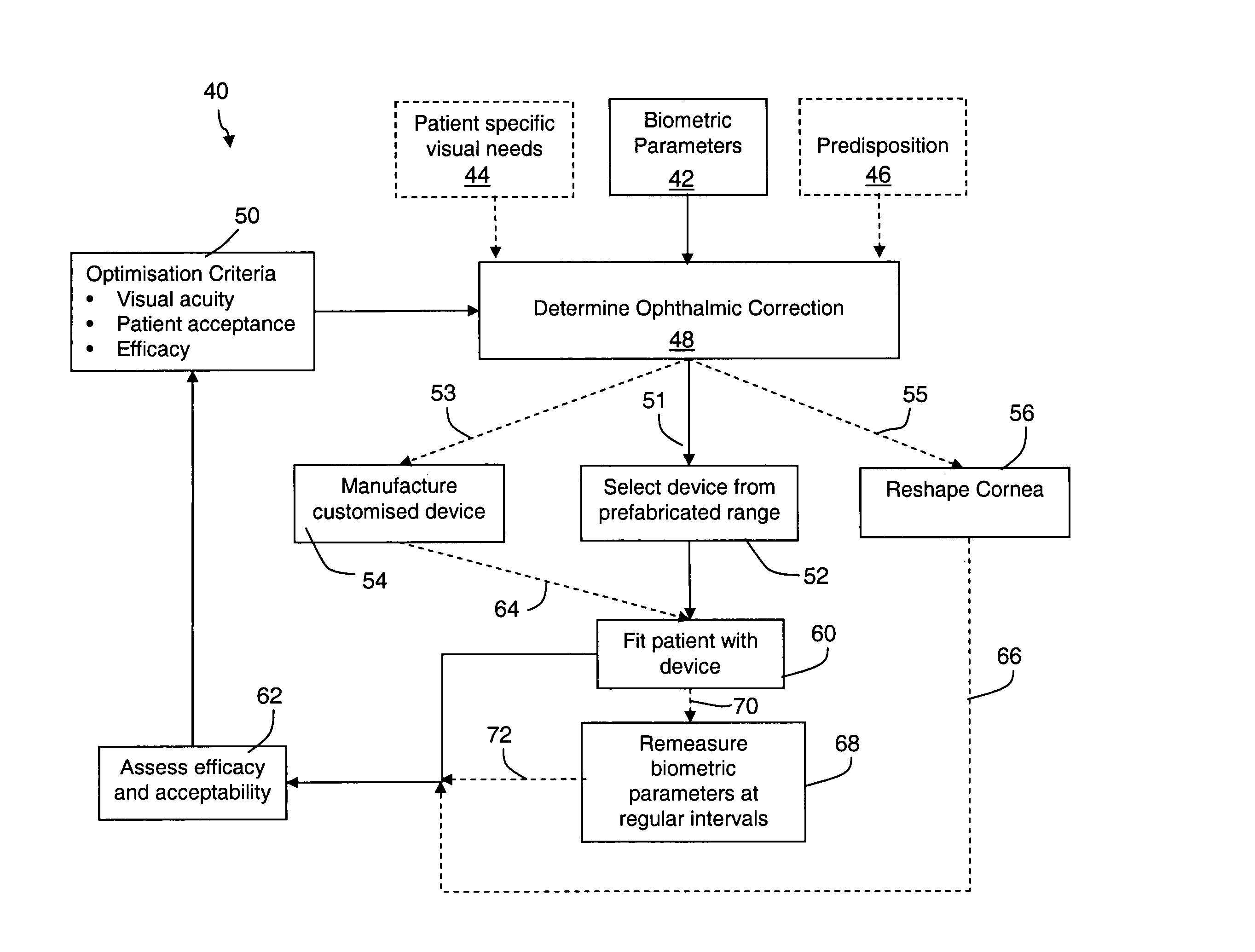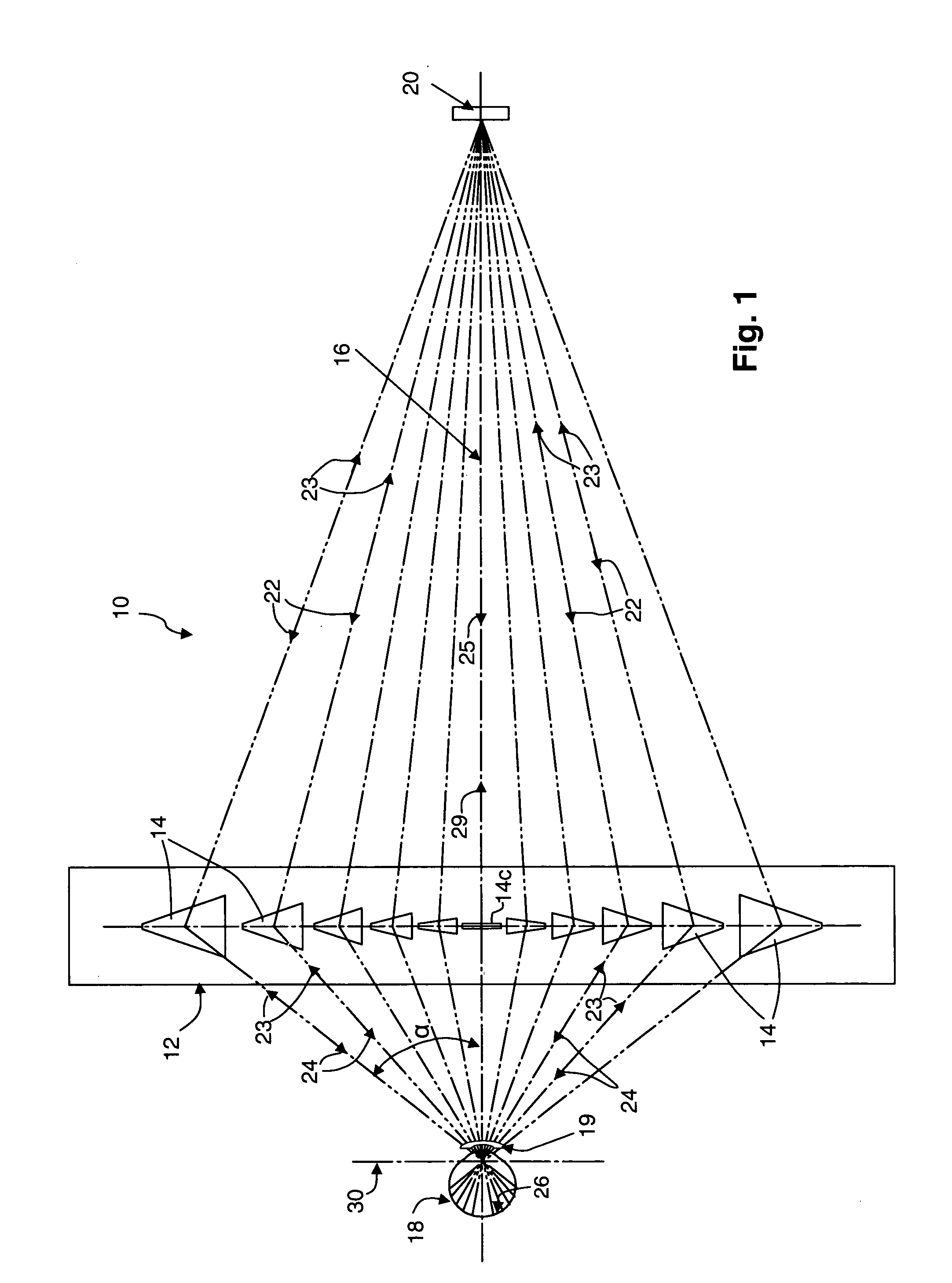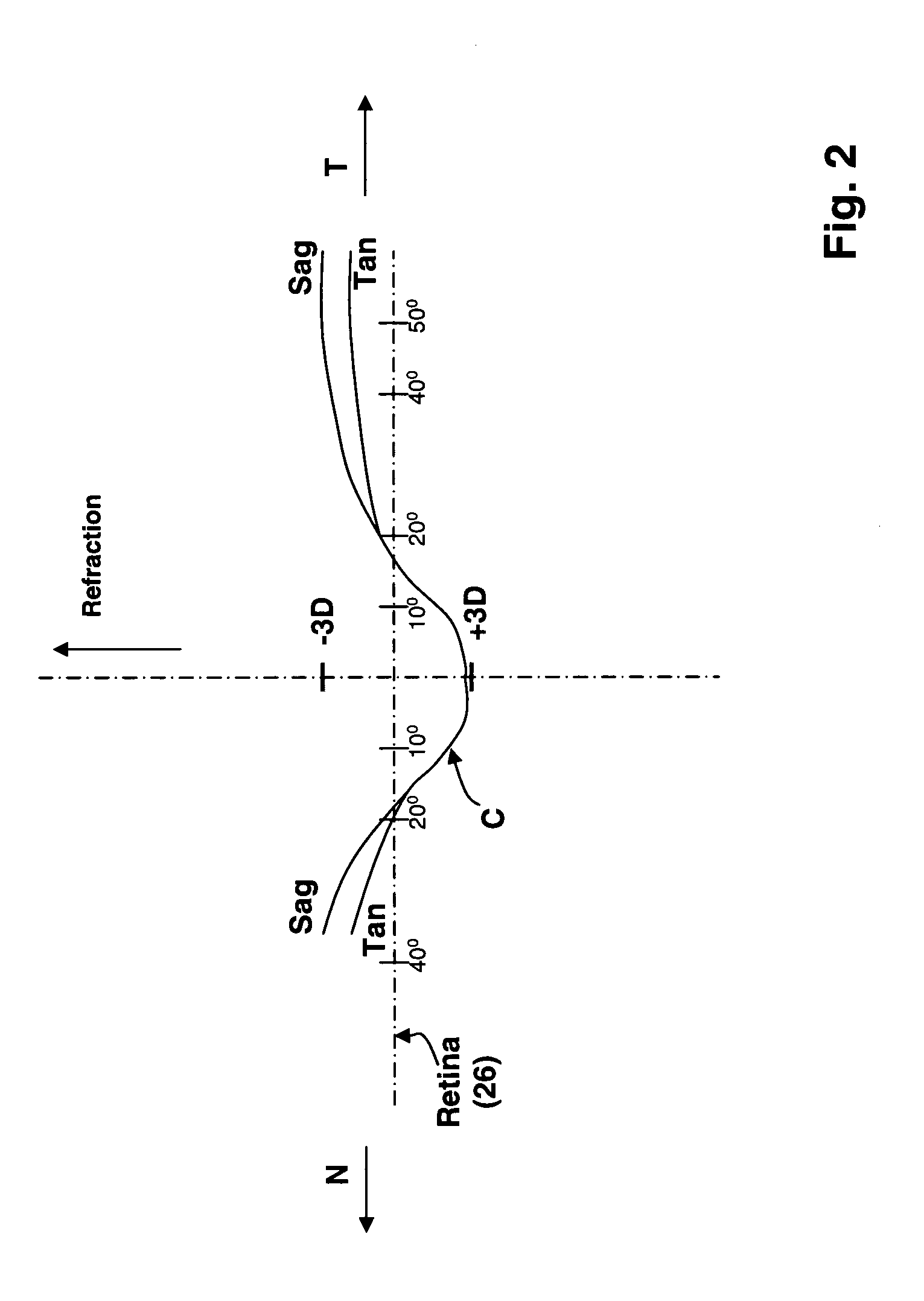Determination of optical adjustments for retarding myopia progression
a technology of optical adjustments and myopia, applied in the field of determination of optical adjustments for retarding myopia progression, can solve the problems of increased peripheral hyperopia, customisation need not correct peripheral aberration, and use of counter-productive conventional lenses, complicating the matter of familial or genetic predisposition,
- Summary
- Abstract
- Description
- Claims
- Application Information
AI Technical Summary
Benefits of technology
Problems solved by technology
Method used
Image
Examples
Embodiment Construction
[0019]Having broadly portrayed the invention in the above summary, examples of the implementation of the invention will now be described with reference to the accompanying drawings for the purpose of illustration.
BRIEF SUMMARY OF THE VARIOUS VIEWS OF THE DRAWINGS
[0020]FIG. 1 is a diagrammatic plan view of an instrument suitable for use in determining the peripheral focal plane of a human eye.
[0021]FIG. 2 is a line graph of refraction vs. peripheral field angle for the horizontal nasal—temporal meridian of a human eye as measured by the instrument of FIG. 1.
[0022]FIG. 3 is a flow chart depicting a first example of a process for prescribing and providing custom ophthalmic correction devices to a patient suffering from—or in danger of developing—progressive myopia.
[0023]FIG. 4 is a flow chart illustrating a second example of a process like that indicated in FIG. 3.
[0024]FIG. 5 is a series of line graphs of refraction vs. retinal eccentricity or peripheral angle over the horizontal temp...
PUM
 Login to View More
Login to View More Abstract
Description
Claims
Application Information
 Login to View More
Login to View More - R&D
- Intellectual Property
- Life Sciences
- Materials
- Tech Scout
- Unparalleled Data Quality
- Higher Quality Content
- 60% Fewer Hallucinations
Browse by: Latest US Patents, China's latest patents, Technical Efficacy Thesaurus, Application Domain, Technology Topic, Popular Technical Reports.
© 2025 PatSnap. All rights reserved.Legal|Privacy policy|Modern Slavery Act Transparency Statement|Sitemap|About US| Contact US: help@patsnap.com



